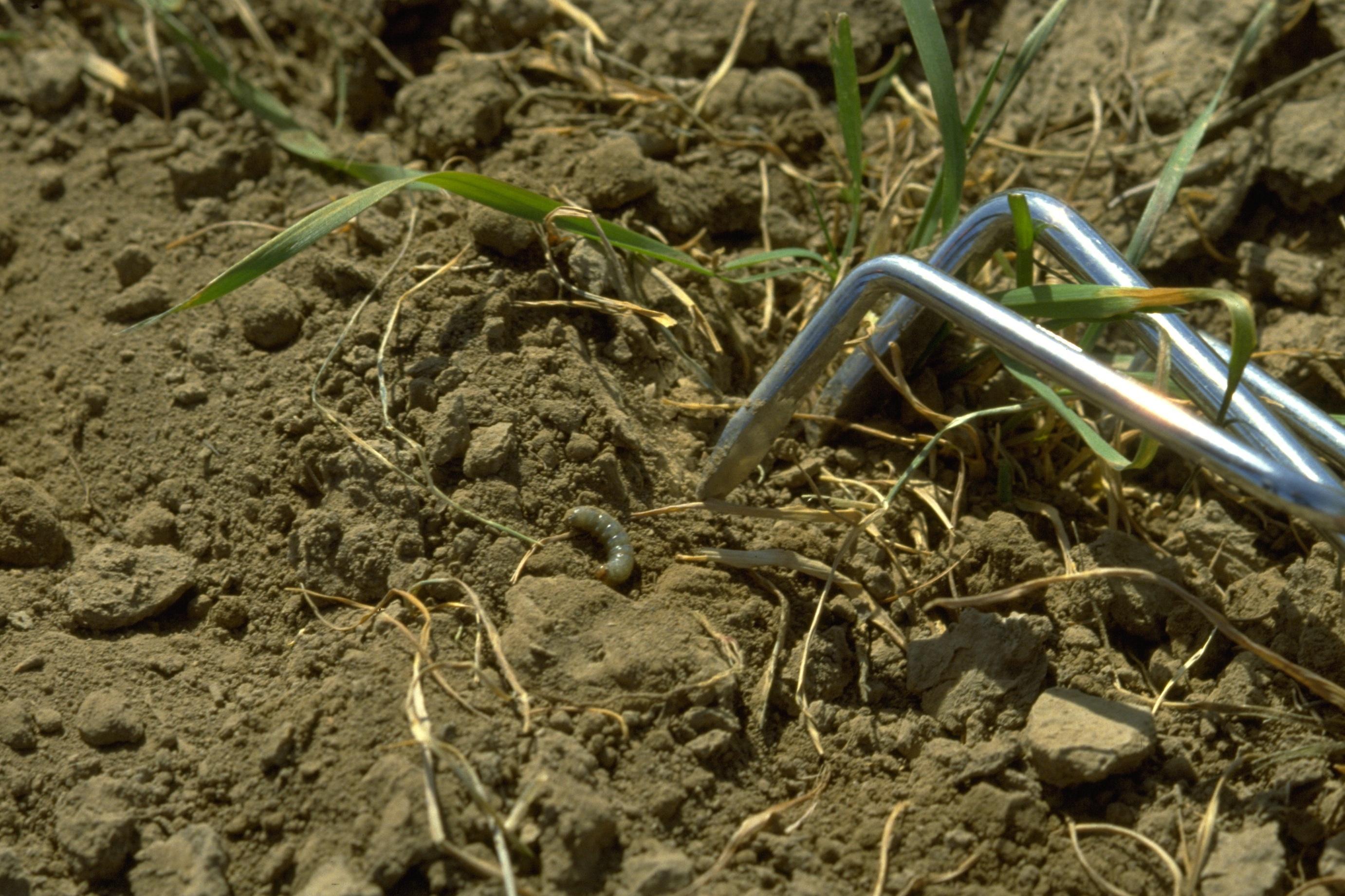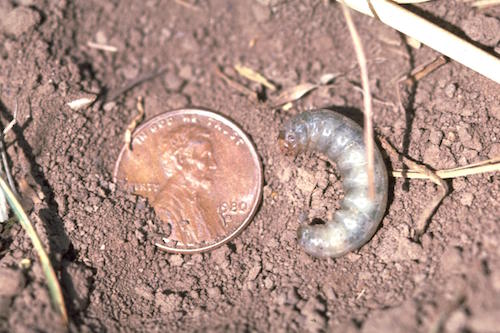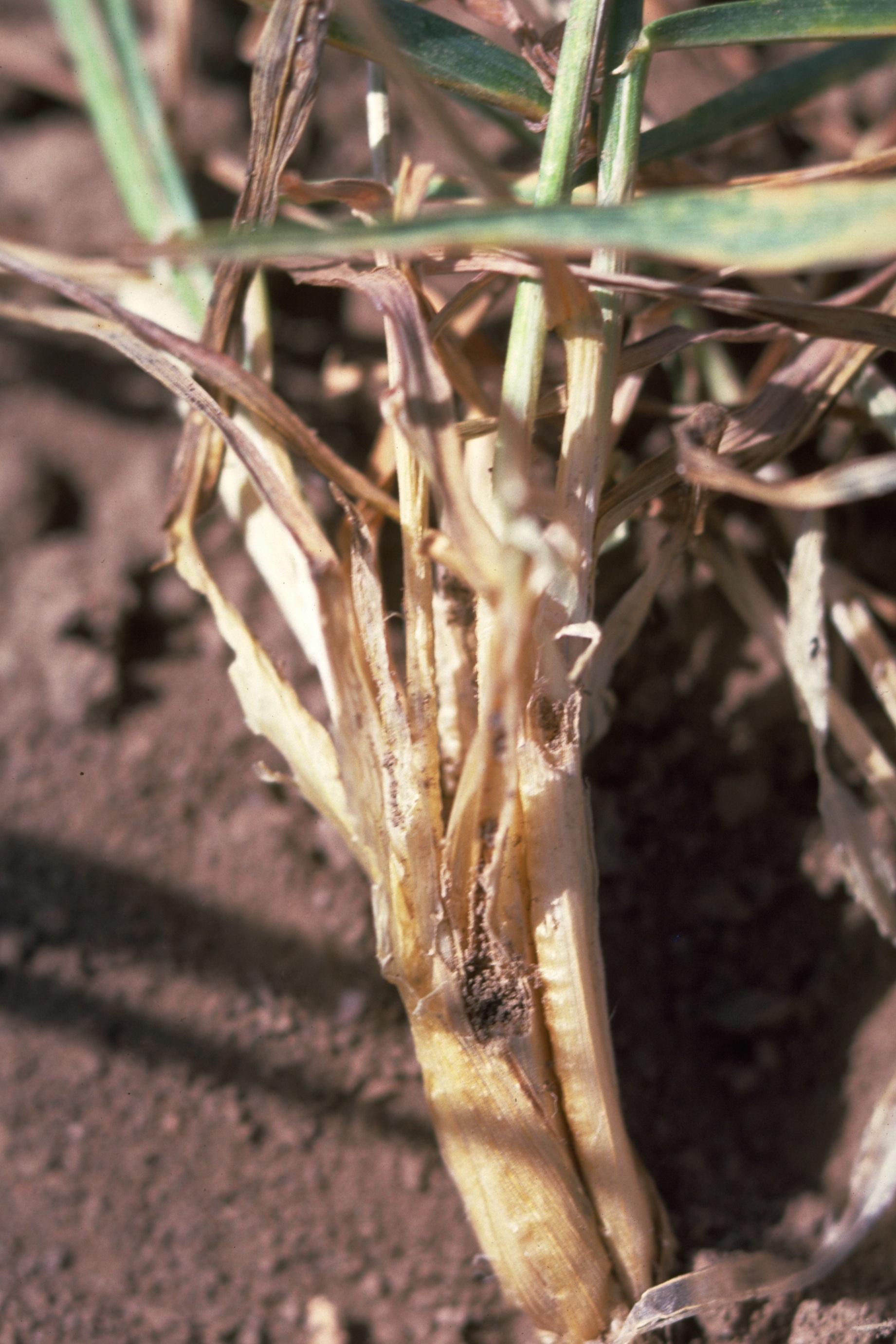Adult moths emerge from the soil in late summer and fall. They are light gray in color with indefinite markings and a wingspan of about 1 1/4 inches. Eggs are deposited in loose, dry, sandy or dusty soil. Thus, larvae are usually found most easily in the driest parts of the field, such as hilltops. Eggs usually hatch in very early spring and larval damage often becomes noticeable about the time the wheat begins to joint in March or April. The pale western cutworm is a subterranean cutworm, feeding on the stems of the crown just below the soil level. Feeding results in severed stems and entire fields may be lost in a matter of days. The larvae are light in color without conspicuous markings. After feeding is completed, pale western cutworm larvae move to pupal chambers constructed several inches below the soil surface. Adult emergence can begin in late July. Pale western cutworms are occasionally found in corn, usually where a wheat field is replanted to corn in early spring. In corn, the larvae may cut off small seedlings below ground. On larger corn, they may enter the plant and cause the growing point to die. Outbreaks are associated with dry conditions in the previous spring. If the preceding May and June had fewer than 10 days when the soil surface was wet, pale western cutworm populations can be expected to increase. If the preceding May and June had more than 15 such days, the cutworms will almost totally disappear. Rainfall of more than a quarter of an inch drives the cutworms to the soil surface and exposes them to predation and parasitization. Actually, it may take several dry springs in a row to produce a serious outbreak.



